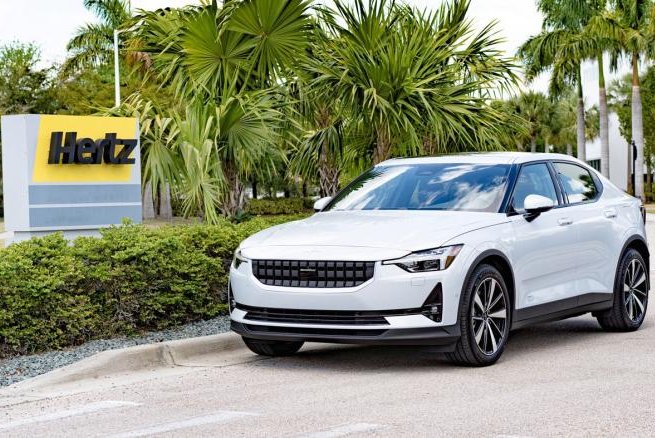Ex-Hasidic trans activist photographed by Annie Leibovitz
Abby Stein, an activist for LGBTQ+ inclusion in Jewish communities and beyond, is one of dozens of subjects in a new library to showcase the diversity of people.
Abby Stein remembers two things well about her first-ever editorial photo shoot after coming out as an ex-Orthodox trans woman.
The first was that the shoot, in her bedroom for Vogue magazine in 2018, was the first time Stein had posed in a bra, and she wasn’t totally comfortable with the experience.
The second was that someone asked her who her dream photographer would be.
The name that popped into her mind was “one that I knew was never going to happen,” she recalled last week — Annie Leibovitz.
“She’s definitely done a lot of work to elevate LGBTQ voices and portraits,” Stein told the Jewish Telegraphic Agency last week about why she was drawn to Leibovitz, the award-winning portraitist. “And she is obviously Jewish.”
Four years later, that dream has come true: Leibovitz has photographed Stein in a setting that couldn’t be more different from her New York City apartment — on the deck of a cruise liner.
Stein, an activist for LGBTQ+ inclusion in Jewish communities and beyond, is one of dozens of subjects of photographs in a new library created by Celebrity Cruises to showcase the diversity of people who love to travel. The images — which also include #MeToo movement founder Tarana Burke, disability activist and model Jillian Mercado, and the Jewish director with alopecia Rachel Fleit, among others — will be made available for anyone to use, in an effort to change the public face of the cruise industry.
“What Annie, indeed all of the artists involved in this project have captured so beautifully, is that for vacations to really live up to the marketing moniker ‘all-inclusive,’ then they should start by using images that are inclusive of all, not just a few,” Celebrity Cruises President and CEO Lisa Lutoff-Perlo said in a statement.
“I am keenly aware of the privilege to be asked to participate,” Stein wrote on Twitter. “I don’t think this is about me — this is about representation in the LGBTQ, and especially trans, community. It’s about bodies that are different than the mainstream ‘cis-straight-normative’ expectations.”
Stein was careful to note that though she did post about her experience on social media, promoting the company was not part of her contract for the photoshoot. But she said knowing that the CEO of Celebrity was the first woman to lead a Royal Caribbean Group cruise line brand and that the company was the first to have a woman captain a “mega” cruise ship gave her confidence that the company’s inclusion efforts were genuine.

“While I don’t understand corporate intentions, the people I worked with from Celebrity were all really, really amazing and they really mean it,” she said. “I think they’ve done a lot of amazing stuff towards being more inclusive and I’m a big fan of inclusivity. Specifically, actual actions.”
Working with Leibovitz gave Stein “a lot of courage,” Stein said. She added, “It was legitimately such a diverse crowd. People with different abilities, people with different looks, different ages, different body types and everything. So it was a very, I would say empowering moment.”
For the shoot, Stein got to pick from a few 1950s-style options, ultimately choosing a white one-piece with black polka dots and posing on a chaise on the deck of a Celebrity Cruise liner where she and other models spent a full week.
Stein’s Jewish identity became a recurring theme through her seven nights on the cruise. Leibovitz — who vaulted to her first staff job, at Rolling Stone, on the strength of photographs she took in Israel in the 1970s — revered Stein’s background as a rabbi, Stein recalled.
And when word circulated that Stein celebrates Shabbat every week, Celebrity CMO Michael Scheiner, who is also Jewish, asked if she would like to lead Friday night services on the boat.
“That wasn’t part of any contract or any deal,” Stein said. “I wasn’t paid for that or anything. But literally within a day they added it to the cruise schedule.”
Dozens of cruise guests attended. Stein led the service and gave a short sermon. Manischewitz grape juice and fresh-baked challah were served.
“It was really nice and sweet,” she said.


















